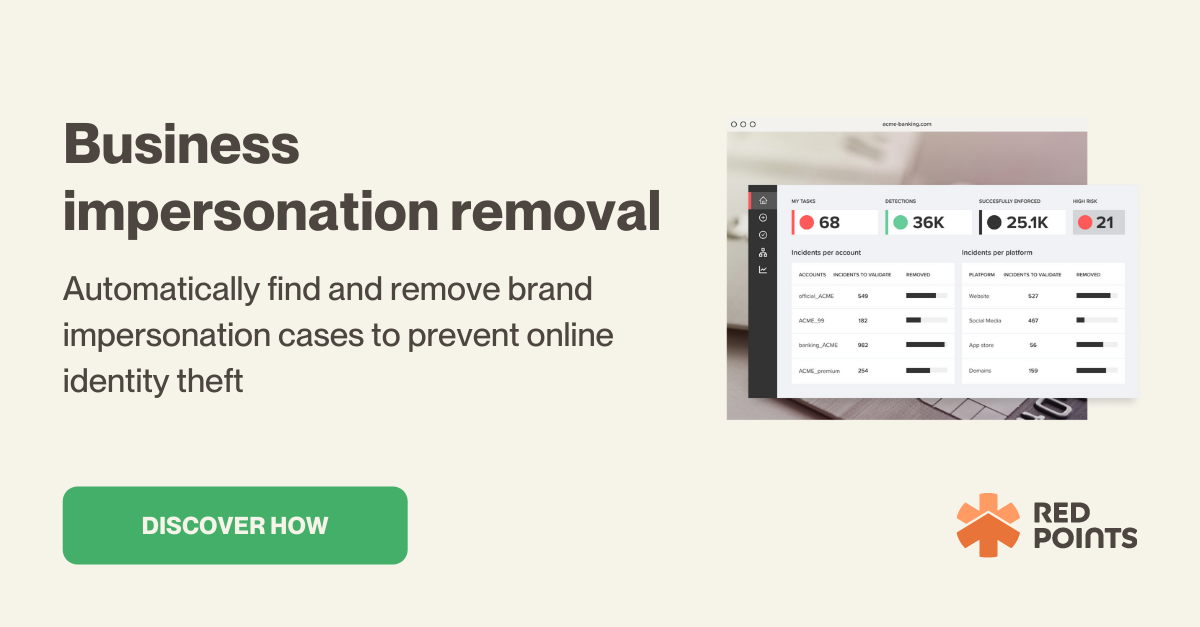You cannot just create a strong brand identity overnight. It isn’t as easy as throwing a few colors together and designing a brand logo with a pen. Your customers associate your brand identity with your company and its products.
That is why, it’s important to take a strategic approach to building an identity that reflects your brand accurately – An identity that can help your business grow and sustain over the years.
In this article, we discuss:
- The importance of brand identity
- How to create your brand identity
- Why it’s crucial to protect your identity
The importance of brand identity
Brand identity includes a set of visual elements like brand name, logo, design, and color that help a brand stand out among its customers. It represents the brand’s personality and values.
A strong brand identity becomes critical if you want to improve brand recognition, customer trust, customer loyalty, and business growth. In a widely competitive market where businesses are doing everything they can to get the attention of customers, a strong brand identity helps you find the right position for your brand in the market and in turn improve brand awareness as well.
What are examples of strong brand identity?
Apple
Apple’s iconic bitten apple logo is one of the best examples of a strong brand identity. The logo that was first introduced by the company in 1977 has gone through some changes in terms of illustrations but the overall design has stayed the same for more than 40 years. Now, Apple’s logo can be found on all of its devices, websites, and other marketing materials, and truly helps the brand stand out among a sea of competitors.
Coca-cola
Coca-Cola is truly one of the industry leaders in terms of branding. Every aspect of their brand identity focuses on evoking emotions and a sense of belonging in their customers, especially with campaigns like ‘Taste the Feeling’ and ‘Share a Coke.’
The iconic red and white logo of the cold drink brand has also stood the test of time. The logo uses a vintage serif font to create a hand-drawn effect which makes it all the more approachable.
Spotify
The music streaming platform has a considerably subdued visual identity. The color palette of black, white, and green has been intentionally chosen to let the album artworks stand out on the platform. The logo is also minimalistic with three curved lines in a green circle – which many might associate with sound waves.
How to create your brand identity
1- Assess your brand’s current identity and positioning
In order to create a brand identity that reflects your brand’s values and story, you need to better understand your brand and what you want it to mean for your customers. Start with a brand assessment to analyze the current state of your brand and how you want to change it to achieve future business goals.
2- Take a look at your competitors
The entire aim of creating a brand identity is to stand apart from your competitors and make your brand unique, relevant, and more visible to your target audience. That is why it is important to take a look at your brand’s competitors and analyze their brand identity.
3- Create a well-documented branding brief
Instead of directly jumping into designing, you first need to create a branding brief that details the information your team needs so that they always stay on the same page. The brief can include your branding goals, target audience demographics, brand’s values, and brand positioning.
4- Create your logo
Your brand’s logo is one of the main pillars of your brand identity. Ideally, you need a strong and unique logo that can capture the very essence of your brand and help you stand out. At the same time, you should also make sure that your logo is not too similar to any of the existing trademarked logos.
5- Select the color palette
With your logo designed, it’s time to now choose a color palette of your brand. Colors can be a great way to differentiate your brand from competitors and evoke strong emotions.
6- Decide on a tagline
Not every brand has a tagline and to be very honest, not every brand needs one, but when used correctly, a tagline can be an extremely useful tool for brand identity.
Ideally, your tagline should serve one of the four purposes:
- Expressing your brand’s values
- Showcasing your brand positioning
- Helping customers remember you
- Clarifying what your brand or its products do
7- Design other additional elements
If you’re planning to experiment with different types of content, you will need additional visual elements to create a cohesive brand identity.
These elements can include
- Product images
- Website graphics
- Illustrations
- Icons
You need to make sure that all of these elements align perfectly with your brand name, logo, and color palette.
Keep your brand identity protected
Just creating a brand identity is not enough. Bad actors like business identity thieves impersonate your business and cause serious damage to your brand reputation and customer loyalty.
You need to take proactive steps to protect your brand identity and ensure no one takes advantage of all the efforts you have invested in positioning and marketing your brand.
Here are some ways to protect your brand identity:
- Buy the alternative version of your domain: If your domain name has a .com, consider purchasing .co.uk or other regional extensions even if you don’t yet have any plans to expand in other markets. This will help you avoid getting targeted by cyber squatters and becoming a victim of website impersonation.
- Claim your brand name on all major social media platforms: Register your brand name on all social media platforms, whether you are pushing content on them or not. Social media impersonation has become all too common even for small businesses. Bad actors impersonate brands on social media to trick customers into buying counterfeits or sharing their private information.
- Register your intellectual property: You can protect elements of your brand identity by registering for them as your intellectual property. For instance, you can trademark the brand name, logo, taglines. You can copyright visual elements like product images and illustrations. It’s also possible to register color mark in case your brand uses distinct colors.
- Automated brand identity protection: Spending considerable time and effort everyday tracking down scammers trying to steal your brand identity isn’t just challenging, it’s next to impossible, which is why you should consider using a brand identity protection tool. Red Points makes it easier for you to find and track down scammers through its impersonation removal software. The platform can automatically find fake websites, apps, domains, and accounts to protect your brand identity from being stolen.
What’s next
Consistency and uniqueness are the keys to a strong brand identity, but remember, any attempts of business identity theft can make your brand lose its uniqueness and substantial revenue.
See how you can prevent business identity theft with Red Points.






